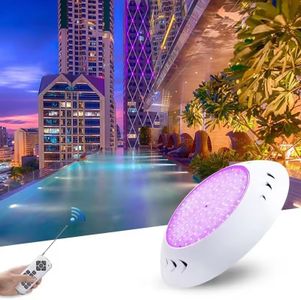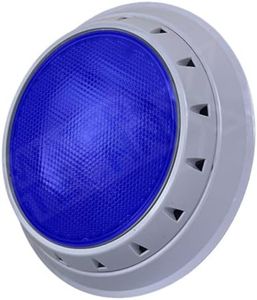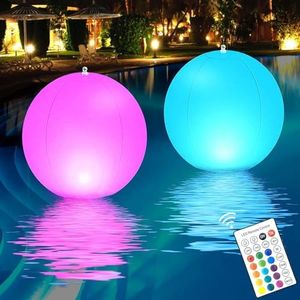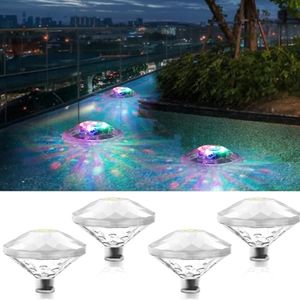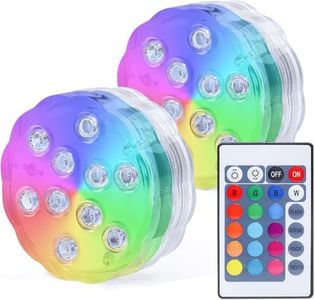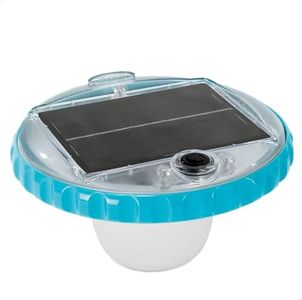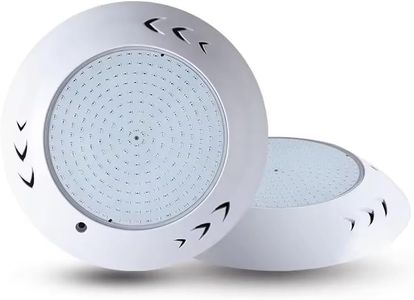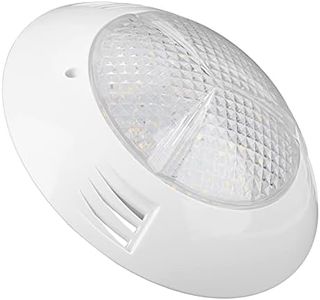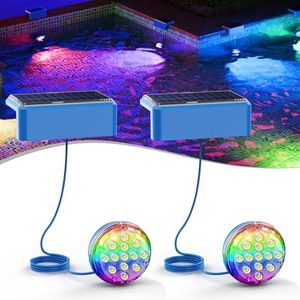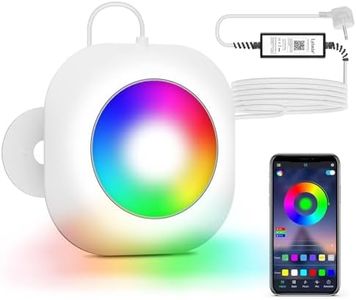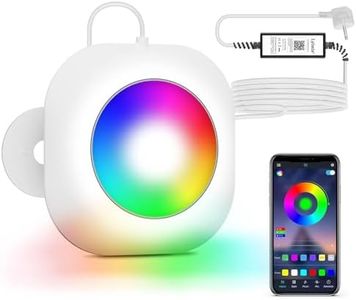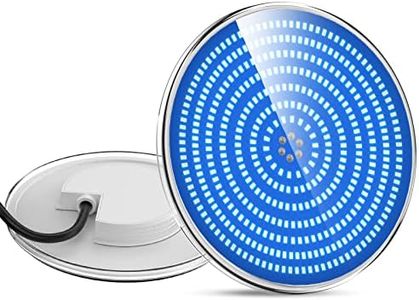We Use CookiesWe use cookies to enhance the security, performance,
functionality and for analytical and promotional activities. By continuing to browse this site you
are agreeing to our privacy policy
10 Best Led Pool Lights
From leading brands and best sellers available on the web.Buying Guide for the Best Led Pool Lights
Choosing LED pool lights is an important decision for both the safety and the aesthetic of your swimming area. It's not just about having lights underwater; it's about creating an inviting atmosphere, ensuring visibility for nighttime swimming, and keeping maintenance simple. Understanding the different features of pool lights can help you pick options that will suit your pool size, your desired effect, and your level of technical comfort.Brightness (Lumen Output)Brightness, measured in lumens, refers to how much light the fixture gives off. This is crucial because too dim a light won't make the pool safe or appealing at night, while too bright can create glare or discomfort. Small pools or spas can use lower lumen lights (around 400-800 lumens), which provide gentle illumination. Medium pools often work well with mid-range lights (800-1600 lumens) for a balanced effect. Large pools usually need high-output lights (1600+ lumens) to ensure the whole area is well-lit. Consider the size and depth of your pool: larger or deeper pools require more brightness, while cozy or accent-focused settings can use less.
Color Options (Single vs Multicolor/RGB)LED pool lights can either produce a single color (typically white or blue) or offer a range of colors via RGB technology. Single-color lights are straightforward and useful for traditional, no-fuss lighting. Multicolor options let you change the light color or run color shows, often controlled by remote or app. If you like the idea of themed pool parties or want to shift the mood with lighting, multicolor might be best. For simpler, more classic looks or minimal tech involvement, single-color lights will do the trick.
Installation Type (Flush/Surface-Mounted vs. Floating/Drop-In)Installation type refers to whether lights are fixed permanently into the pool wall (flush or surface-mounted) or if they're portable units that float or hang in the water. Built-in lights create a clean, professional look and are more durable long-term but require more effort to install, sometimes needing a professional. Floating or drop-in lights are easy to place and move but usually aren’t as bright or long-lasting. If your pool is being built or renovated, flush or surface mounts are ideal. For renters, above-ground pools, or temporary setups, floating or drop-in types are convenient.
Power Source (Hardwired, Solar, or Battery-Operated)LED pool lights can be powered by a hardwired electrical connection, solar panels, or replaceable/rechargeable batteries. Hardwired lights are the most reliable and suitable for permanent installations, but they involve electrical work. Solar lights are an eco-friendly choice and easy to install, though they depend on getting enough sunlight and may not be as bright. Battery lights offer simplicity and flexibility but need regular charging or battery changes. Consider your access to power outlets and how permanent or portable you want your lights to be.
Control Options (Manual Switch, Remote, App)How you control your pool lights adds to convenience and enjoyment. Manual switches are simple and dependable—just flip a switch to turn on or off. Remotes allow you to change settings from poolside, while app control connects your lights to your phone for more sophisticated functions like timers, color changes, or syncing with music. Choose what fits your lifestyle: If you enjoy technology and want versatility, remote or app control is a plus. If you prefer simplicity, stick with manual controls.
Waterproof Rating (IP Rating)The waterproof rating, usually expressed as an IP number (like IP68), indicates how well the light can withstand water exposure. Pool lights must be highly waterproof as they are fully immersed; IP68 means the light can go underwater for long periods. Always ensure your light is rated for continuous underwater use, not just 'splash proof.' This is important for safety and longevity—never compromise on this spec for a pool environment.
